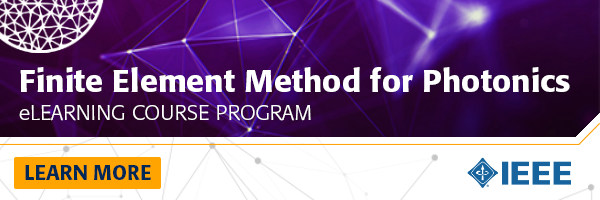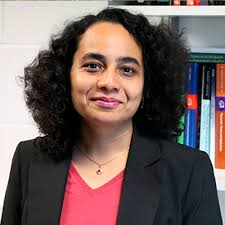
Get Finite Element Method (FEM) training from IEEE. A not-for-profit organization, IEEE is the world's largest technical professional organization dedicated to advancing technology for the benefit of humanity. IEEE Continuing and Professional Education courses are designed to help engineers stay up-to-date on the latest technologies. Produced and vetted by leading experts, you can count on IEEE Continuing Education courses to equip you with the information you need to stay current in your field.
The Finite Element Method for Photonics
This course is made to educate engineers on one of the most powerful numerical approaches available when developing photonic components and devices.This new course program provides a comprehensive and up-to-date account of FEM in photonics devices. With an emphasis on practical, problem-solving applications and real-world examples, engineers will understand how mathematical concepts translate to computer code finite-element-based methods.
This five-course program covers topics such as:
- Numerical Methods
- The Basics of Finite Element Method
- Modelling of multilayer stacks/anti-reflection coatings
- Modelling of optical waveguides and fiber
- Modelling of optical fibers and Photonic Crystal Fibers
Upon successful completion of The Finite Element Method for Photonics, your engineers will receive valuable CEUs/PDHs from IEEE that can be used to maintain engineering licenses.
Course Program Details
The The Finite Element Method for Photonics online training program includes the following courses:
Introduction to Numerical Methods
This module explores the various classes of numerical methods that are used in Photonics, and how these are classified, their simplifying assumptions. The content will also include discussion on the advantages and limitations of the classes of methods, the pros and cons of commercial software and tips on how to maximize their usage. The focus is on helping participants to understand how to choose the appropriate modelling method for their particular need.
The Basics of Finite Element Method
The fundamental principles of Finite Element method will be covered in this module. Some of the key mathematical assumptions in the method (without going into detailed derivation) will be presented. The focus is on providing interested participants enough background and insight into the method that allows them to do further study as required, and equip others to use the method effectively.
Applications of Finite Element Method: Modelling of multilayer stacks/anti-reflection coatings
In this module, we will use a popular example that has multiple applications: how to model optical waveguides starting with planar/slab waveguides, and including simple step index fibres and obtain their modal properties (e.g. effective indices) in commercial FE software.
Applications of Finite Element Method: Modelling of optical waveguides and fibers
In this module, we will use an example that builds on a previous module: how to model optical fibres and obtain their modal properties in commercial FE software with variation in wavelength/frequency of operation. The inclusion of dispersion and calculation of derived quantities (from the field) such as mode field area, effective area etc. will be discussed in this module.
Applications of Finite Element Method: Modelling of optical fibers and Photonic Crystal Fibers
In this module we move from guided wave structures to the use of S parameters for calculating Reflection/Transmission at interfaces and ports. This has applications in multiple fields. We will through 4 examples cover simple Fresnel reflection to anti reflection coatings, polar dielectric layers and plasmonic structures.
Meet the Instructor

Arti Agrawal
Arti Agrawal is an expert in numerical modelling methods for Photonics and has co-authored a text book “Finite element modelling methods for Photonics” published by Artech House as well as edited a book, “Recent Trends in Computational Photonics” published by Springer. She is currently an Associate Professor in the School of Data and Electrical Engineering at University of Technology Sydney. Her research interests are modelling of photonics devices: spiral fibres, solar cells, photonic crystals etc. and development of numerical methods. Arti is a Chartered Engineer and Chartered Physicist as well as a Senior Member of IEEE. She writes a blog http://artiagrawal.wordpress.com.

